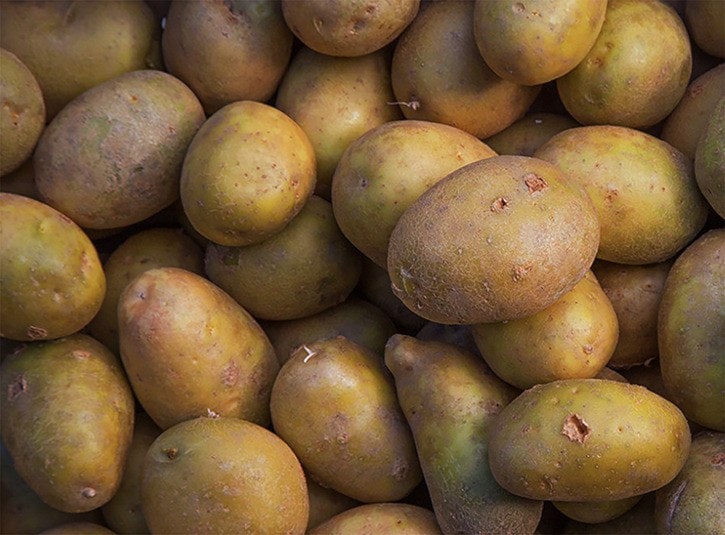Fall is a hectic time in the market garden; not only does the produce still need to be marketed and sold, but fall and early spring crops must be planted, according to Dustin Morton, commercial horticultural specialist at the Alberta Agriculture and Forestry.
"Not to mention ensuring the safe harvest and storage of the bounty of the previous season," said Morton.
Proper hardening off and storage of crops at this time of year can ensure rewards to reap for months to come while improper storage only ensures that you will be purchasing produce for the remainder of the winter.
By following a few simple steps for some longer-term storage, crops like potatoes, carrots, onions, and garlic, one can ensure success follows from the field to the market table, added Morton.
"Curing is the process that many vegetable crops go through which allows the harvested product to be stored for the long term," said Morton.
This is typically done at a higher temperature with good ventilation and allows the product to dry down, harden, and in some cases, heal wounds that occurred during the harvest.
"Potatoes are a good example, a crop that benefits from curing and is best done at 15-20°C and a humidity greater than 80 per cent for approximately two to three weeks," explained Morton. "This should be done out of direct sunlight to prevent greening of the tubers and ideally the temperature should be lowered by no more than 2°C per day until the temperature that they'll be stored at is reached."
Morton said that garlic is similar in its curing temperature of 20°C but requires much better ventilation to ensure that the tops dry down and die.
"Typically, roots, stems, and excess dirt are removed only once cured," added Morton. Onions, while similar to garlic in being a bulb, actually requires a much higher curing temperature of 32-35°C with good ventilation for 10 to 14 days.
"Many growers will erect shade cloth in unused hoop houses to achieve the desired temperature for curing while reducing the chance of sunburn," said Morton. "While appropriate curing can ensure your harvest will last in storage, storage atmosphere is the ultimate determinant in how long a crop will last."
Under optimal conditions, storage crops like onions and potatoes can last anywhere from two to 12 months depending on variety and a number of other factors.
"One of these factors, regardless of how large or small your storage space is, is the cleanliness of it and the ability to control storage temperature and humidity," stated Morton. "While you may not have access to humidity increasing equipment, you more than likely have access to a hose which can be used to spray walls and floors to increase humidity."
Similarly, fans can be used to draw in cool air and disperse throughout the space when it needs to be cooled.
"Monitoring these and variables and attention to detail will have a measurable impact on the length of your crop," added Morton.
Like curing conditions, the range and requirements for different crops and their storage varies greatly.
Morton said that for example, optimal storage temperature for potatoes is between six and eight degrees Celsius, with a relative humidity of approximately 95 per cent. "Storing at temperatures warmer than this will reduce the lifespan of your potatoes while temperatures lower than this can result in a "sweet" potato as starch in the potato is converted to sugar," said Morton.
In contrast to this, carrots, which should not be cured as it will reduce their quality, are best stored at zero degree Celsius and 95 per cent humidity.
"Because of this humidity, grading and culling should be done on carrots not only before they go into storage but also when they're pulled out of storage," said Morton. "Cool, moist conditions are perfect for fungi such as Sclerotinia (fuzzy white mould) which can be a huge problem in longer-term carrot storage and therefore needs to be culled out when getting ready for market."
Onions and garlic find their happy medium between carrots and potatoes temperature wise (around two degrees Celsius), however humidity control with these two is paramount.
"In a dried crop such as these two, a relative humidity closer to 60-70 per cent is important in order to avoid condensation forming on the bulbs, a perfect home for fungi and bacteria that can quickly reduce your crop to slime," explained Morton. "While many other crops can be stored for a period of time, garlic, onions, carrots, and potatoes are some of the easiest to store and are popular market items in a long Alberta winter. With proper attention to curing and storage conditions, you can ensure that summer's bounty lasts well into fall and winter."
